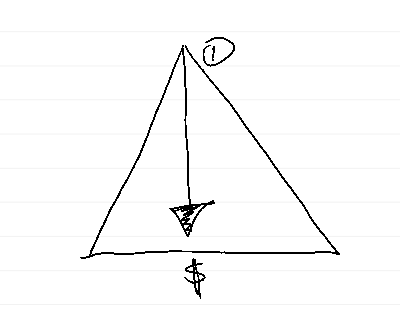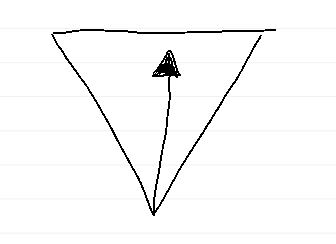Flipping the org chart
This is note #3 of 6 doing a deeper dive into a framework we are building toward.
This week is focused on the Org Chart:
I think you have heard the parable of The Good Samaritan. (If you haven't worth a read!)
As a child my takeaway was: it is important to be a helpful neighbor.
But there's a meta message that is so very relevant to today: It was a HUGE critique of the social structure!
In first-century Jewish culture there was a dominant focus on holiness. "Be holy as God is holy."
The structure created a society centered around purity. "The righteous" fit certain parameters and you were at the top of the social system. A nice, tight command & control system.
Historical Jesus was the one who shared The Good Samaritan parable to the world. He created all sorts of chaos and tension during his lifetime to flip the focus of society to a new vision. He was showcasing an alternative path forward from what the Pharisees wanted.
Jesus shared an alternative vision of compassion as the focus. Essentially uprooting and empowering all. (including those who were not "holy.")
Jesus walked and served on the fringes showing care to all. Even the "untouchables." Those who were not considered "pure" were welcome to the table for fellowship. Jesus took the road less traveled.
Jesus walked alongside his fellow man. He often would ask: "how can I help?" Jesus found ways in the marketplace to serve. If someone needed eyesight. Done. If someone needed food… done. If someone needed wine… done. "How can I help?"
Jesus showcased an alternative system to the purity system. A system where the first shall be last and the last shall be first.
Jesus was the epitome of a Servant Leader.
What does the story of the Good Samaritan and Jesus's meta message have to do with business?
I think flipping the org chart provides an opportunity to put service and compassion for the team to the forefront.
You get what you structure for.
I think a typical top-down org chart leads to a command & control model.
It takes the approach of a machinist. You tinker, bend, control the inputs to get the desired outputs.
Flipping the org chart upside down leads to a model infused with servant leadership and initiates an opening bid of trust between employee and employer.
It takes the approach more of master gardener. You set the environment then prune, weed, and water.
I have found this structure creates the focus on those closest to the customer. If there's a great front line experience, then it will lead to a great customer experience.
The bottom up approach is focused on supporting the team.
Supporting the team and leaders INCLUDES the skills / tools to address human nature (i.e. confronting issues). Servant leadership when taught properly is not passive but rather assertive.
Empowering and teaching the team to address real issues and find the best way forward.
Starting conversations with: "How can I help?"
Starting with a wager of trust.
Confront issues with a desire to gain a deeper understanding.
Provide guard rails, coaching, and empowerment.
Coach up or coach out
You get what you structure for. That has stuck with me since we started flipping the org chart upside down 20 months ago.
This structure appears to maximize discretionary effort from teammates. Extra effort leads to extra profit.
Since we are an organization of humans… there have been multiple instances where weeds have been taken out of the garden. Leadership under this framework is about upholding the core values AND the strategic position.
More to come on strategic position next week. [the other side holding up the org chart]
Onward,
Matt
*The information and perspective on Jesus inspired by Meeting Jesus Again for the First Time by Marcus J. Borg



